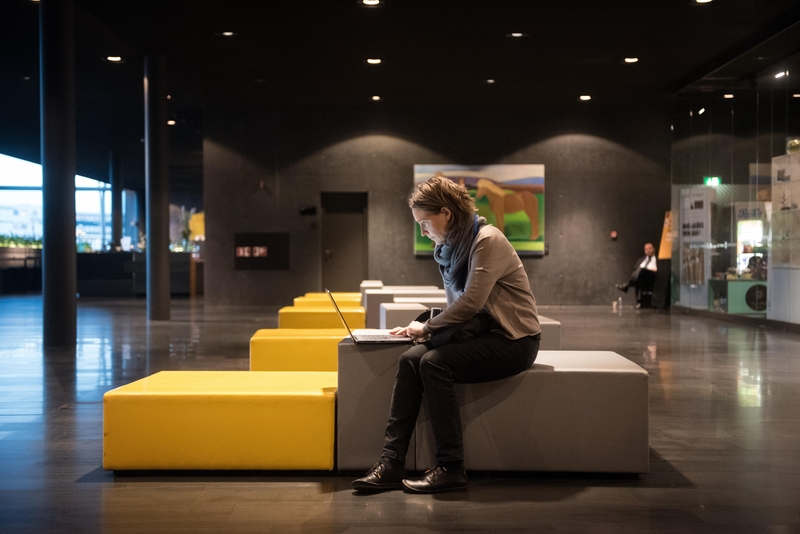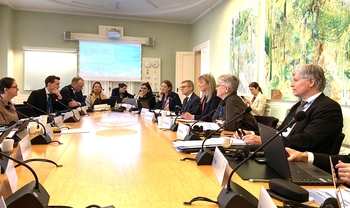Nordic co-operation on labour

Kvinde ved computer ved Nordisk Råds session 2015 i Reykjavik.
The Nordic labour markets face significant changes due to factors such as demographic change, increased globalisation, and international competition. The rapid pace at which new technology is being adopted has consequences for demand, skills sets, organisation, and the content of our working lives. Although these bring opportunities, they also involve considerable challenges.
Official Nordic co-operation on labour analyses and discusses similarities, differences, and best practices related to the challenges faced by all of the countries. It serves as a source of inspiration for national policy development and provides opportunities to co-ordinate points of view in those areas where the countries are able to achieve more by working together.
Nordic co-operation on labour covers these areas:
Employment and the labour market
The focus of Nordic co-operation on employment and labour-market issues is on matching demand and supply for qualified labour, encouraging the highest possible level of participation in the labour market for women and men, as well as keeping the number of people permanently excluded from the labour market as low as possible. Young people, immigrants, and people with few formal qualifications are examples of social groups at particular risk of unemployment. A need will arise to promote the development of expertise that matches the needs of the Nordic labour market.
Work environment
The objectives for the work environment are to improve the physical and psychological work environment for both women and men, e.g. by preventing work-related illness and injury, and by eradicating unacceptable working conditions, social dumping, and other illegal practices. This work includes a focus on the exchange of knowledge and experiences on effective work environment strategies and inspection methods. Improving understanding of the positive effects of the work environment for productivity will also draw attention to Nordic solutions and competitiveness.
Employment law
The priority in employment law is the balance between protecting the employee and flexibility in the labour market, as well as properly regulated conditions, adapting, and developing the Nordic tripartite model of industrial relations. The focus is also on EU matters, such the early legislation phase, ongoing negotiations, the implementation of EU legislation and rulings by the European Court of Justice.
What does this co-operation mean for you?
One of the objectives of the official Nordic co-operation on labour is to ensure that the work environment and conditions are more or less the same in all of the Nordic countries. Another is to make the Nordic labour market as mobile as possible, which will make it easier for individuals to adapt to the demands of a workplace in another Nordic country. The work done by the Nordic countries to promote cross-border freedom of movement in the Nordic Region includes adapting regulations and providing clear information about any differences that remain.
Nordjobb offers young people aged 18 to 30 the opportunity to gain work experience and learn about the labour market, culture, and language of another Nordic country. Every year, around 750 young people in the Nordic Region take part in the Nordjobb programme.
Researchers and practitioners in the field of the work environment are able to draw on the overall body of Nordic knowledge and continue their education at a highly specialised level on one of the courses run by NIVA.
The online publication Nordic Labour Journal covers news and background material on the labour market, the work environment, and employment law questions associated with the Nordic labour market model. Nordic Labour Journal draws attention to changes such as new technology, digitalisation, globalisation, and demography, and how they affect the labour market and place new demands on employees, employers, official bodies, trade unions, and labour market organisations.
Find out more about Nordic co-operation on labour market in the Programme for the Nordic Council of Ministers’ Co-operation on Labour 2022-2024
Nordic Council of Ministers’ action plan for Vision 2030
The action plan describes how the Nordic Council of Ministers will work to achieve the objectives of the vision through a number of initiatives in connection with the vision’s three strategic priorities: A green Nordic Region, a competitive Nordic Region, and a socially sustainable Nordic Region. There are twelve objectives linked to the strategic priorities. The strategic priorities and objectives will govern all activities in the Nordic Council of Ministers over the next four years. The action plan is divided into twelve sections linked to the twelve objectives.




